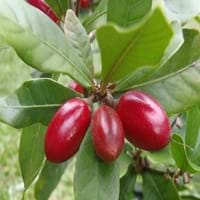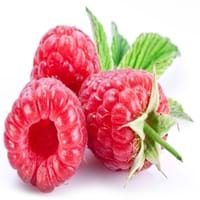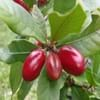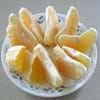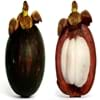Health Benefits
Good for diabetics, Improves well-being, Miraculin/miracle fruit makes sour things taste sweet
Cancer prevention, Heart care, Prevents macular degeneration, Reduces blood circulation problems
General Benefits
Has taste modifying effect
Anti-inflammatory properties, Controls blood sugar levels, Digestive aid, Eye care, Helps in weight loss
Skin Benefits
NA
Anti-aging benefits, Brightens and lightens complexion
Hair Benefits
NA
Acts as moisturizer, Regulates hair growth, Shiny hair
Allergy Symptoms
Itching, Skin rash
Breathing difficulty, Eczema, Hives, Itching, Nasal congestion, Runny nose, Sneezing, Watery eyes, Wheezing
Side Effects
Changes taste of food eaten after this fruit, Coagulation
Allergic reaction
Best Time to Eat
As a snack in the late afternoon, Eat the fresh ones, avoid mixing with any other foods, don't eat after meal., Morning time (before lunch)
Best if taken as a breakfast (or empty stomach), As a snack in the late afternoon, Don't eat after meal, Morning time (before lunch)
Protein to Carb Ratio
Not Available
Vitamin A (Retinol)
Not Available
Vitamin B1 (Thiamin)
Not Available
Vitamin B2 (Riboflavin)
Not Available
Vitamin B3 (Niacin)
Not Available
Vitamin B5 (Pantothenic Acid)
Not Available
Vitamin B6 (Pyridoxin)
Not Available
Vitamin B9 (Folic acid)
Not Available
Vitamin C (Ascorbic Acid)
Vitamin K (Phyllochinone)
Not Available
Lutein+Zeaxanthin
Not Available
Water Content
Not Available
Calories in Fresh Fruit with Peel
Not Available
Calories in Fresh Fruit without Peel
Not Available
Not Available
Calories in Frozen Form
Not Available
Calories in Dried Form
Not Available
Calories in Canned Form
Not Available
Calories in Juice
Not Available
Calories in Jam
Not Available
Calories in Pie
Not Available
Varieties
Gymnema Sylvestre and Thaumatococcus Daniellii
Amity, August Red, Boyne, Canby, Caroline, Comet, Dinkum, Dorman Red, Latham, Meeker, Black Hawk, Hayda, Lauren, Meeker and Latham
Color
Dark red
Black, Purple, Red, Yellow
Inside Color
Greyish-white
Pink
Origin
West Africa
Europe, North Asia
Soil Type
Well-drained
Sandy loam
Climatic Conditions
Rainfall
Cold
Facts about
- The name 'Miracle' because of the magical experience you get after eating it.
- When you have lemon after eating this fruit, it tastes sweet as if it is added with sugar.
- It is also used as natural sweetener.
- There are more than 200 varieties of raspberries.
- In USA, 90% of the raspberries are grown in Washington, California and Oregon.
- They do not ripe after they are picked.
- A raspberry contain 100 to 120 seeds.
Other Countries
NA
Azerbaijan, Canada, Mexico, Poland, Serbia, Spain, Ukraine, United Kingdom, United States of America
Top Importer
Not Available
United States of America
Top Exporter
United States of America
Poland
Botanical Name
Synsepalum Dulcificum
Rubus Idaeus
Synonym
Miracle Berry, Miraculous Berry and Sweet Berry
Not Available
Subkingdom
Tracheobionta
Tracheobionta
Division
NA
Magnoliophyta
Subclass
Asteridae
Rosidae
Family
Sapotaceae
Rosaceae
Species
S. dulcificum
R. idaeus
Generic Group
Not Available
Rose
Difference Between Miracle fruit and Raspberry
We might think that Miracle fruit and Raspberry are similar with respect to nutritional value and health benefits. But the nutrient content of both fruits is different. Miracle fruit and Raspberry Facts such as their taste, shape, color, and size are also distinct. The difference between Miracle fruit and Raspberry is explained here.
The amount of calories in 100 gm of fresh Miracle fruit and Raspberry with peel is Not Available and 53.00 kcal and the amount of calories without peel is Not Available and Not Available respectively. Thus, Miracle fruit and Raspberry belong to Low Calorie Fruits and Low Calorie Fruits category.These fruits might or might not differ with respect to their scientific classification. The order of Miracle fruit and Raspberry is Ericales and Rosales respectively. Miracle fruit belongs to Sapotaceae family and Raspberry belongs to Rosaceae family. Miracle fruit belongs to Synsepalum genus of S. dulcificum species and Raspberry belongs to Rubus genus of R. idaeus species. Beings plants, both fruits belong to Plantae Kingdom.
